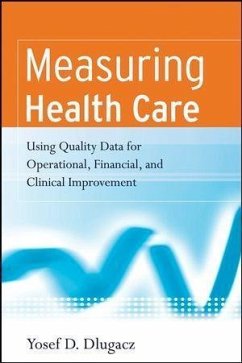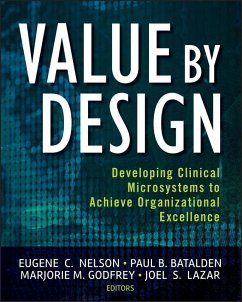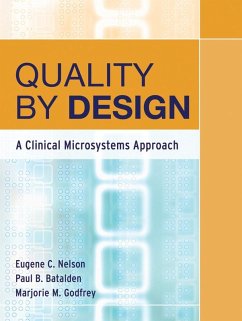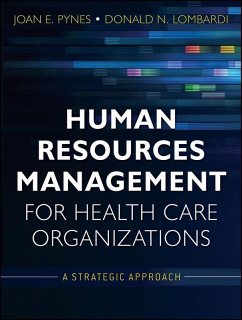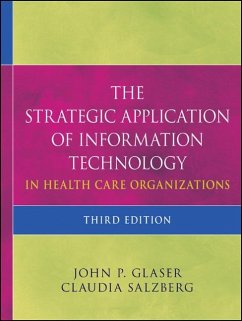
Health Care Operations and Supply Chain Management (eBook, ePUB)
Operations, Planning, and Control
Versandkostenfrei!
Sofort per Download lieferbar
98,99 €
inkl. MwSt.
Weitere Ausgaben:

PAYBACK Punkte
0 °P sammeln!
Health Care Operations and Supply Chain ManagementThis innovative text offers a thorough foundation in operations management, supply chain management,?and the strategic implementation of programs, techniques, and tools for reducing costs and improving quality in health care organizations. The authors incorporate the features and functions of Microsoft Excel where appropriate in their coverage of supply chain strategy, process design and analysis of health care operations, managing health care operations quality, and planning and controlling health care operations.Health Care Operations and Sup...
Health Care Operations and Supply Chain Management
This innovative text offers a thorough foundation in operations management, supply chain management,?and the strategic implementation of programs, techniques, and tools for reducing costs and improving quality in health care organizations. The authors incorporate the features and functions of Microsoft Excel where appropriate in their coverage of supply chain strategy, process design and analysis of health care operations, managing health care operations quality, and planning and controlling health care operations.
Health Care Operations and Supply Chain Management offers real-world examples to illustrate the most current concepts and techniques such as value stream mapping and Six Sigma. In addition, the authors clearly demonstrate how operations and process improvement relate to contemporary health care trends such as evidence-based medicine and pay-for-performance.
Health Care Operations and Supply Chain Management contains:
The book's numerous screen shots and detailed instructions guide the student through the use of Microsoft Excel's many functions and features.
This innovative text offers a thorough foundation in operations management, supply chain management,?and the strategic implementation of programs, techniques, and tools for reducing costs and improving quality in health care organizations. The authors incorporate the features and functions of Microsoft Excel where appropriate in their coverage of supply chain strategy, process design and analysis of health care operations, managing health care operations quality, and planning and controlling health care operations.
Health Care Operations and Supply Chain Management offers real-world examples to illustrate the most current concepts and techniques such as value stream mapping and Six Sigma. In addition, the authors clearly demonstrate how operations and process improvement relate to contemporary health care trends such as evidence-based medicine and pay-for-performance.
Health Care Operations and Supply Chain Management contains:
- Leading edge concepts and techniques
- Real-life data and actual examples from health care settings to underscore the main concepts in the text
- Instruction in the use of Microsoft Excel for health care operations and supply side management
The book's numerous screen shots and detailed instructions guide the student through the use of Microsoft Excel's many functions and features.
Dieser Download kann aus rechtlichen Gründen nur mit Rechnungsadresse in D ausgeliefert werden.






